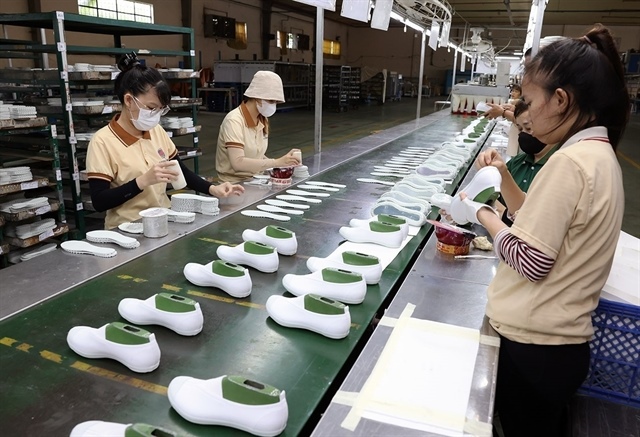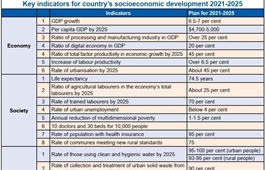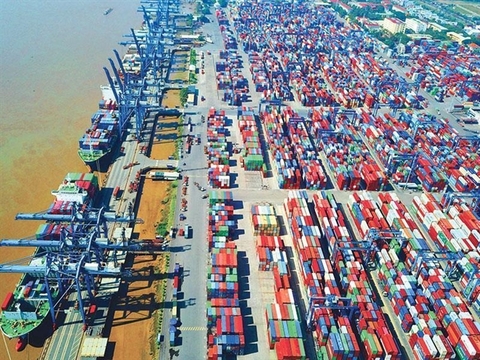Law provisions open doors for development
Law provisions open doors for development
While the laws on investment, enterprises, and funding under the public-private partnership model are appreciated by local and foreign stakeholders, they also await additional guiding documents to manoeuvre their projects effectively and safely through the legal landscape.

Safety and compliance are just two of the main factors directing freedom of business in the country, photo Le Toan
|
The new laws on enterprises, investment, and investment under the public-private partnership model, passed by the National Assembly in June 2020 and took effect on January 1, are all components of Vietnam’s revised economic institutions.
Nguyen Dinh Cung, a member of the Prime Minister’s Economic Advisory Group, however noted that the initial provisions of these laws “were still sketchy”, as enterprises could only do business in areas that the state allowed. In the future, Cung said, enterprises could “participate in many more sectors as the state slowly opens up.”
Four factors
Investment and business are now based on the pillars of freedom of business, equality in activities, safety in operations, and compliance costs. In today’s Vietnam, freedom of business is relatively high, but “enterprises still lack reliable tools to protect their interests and rights,” Cung pointed out.
For example, large-scale inspections can cause businesses to shut down. Vietnam already has a Law on Inspection that regulates such operations, thereby helping to avoid arbitrary actions or abuse of authority of agencies and officials. However, overlaps with other laws still exist.
Up to now, Cung said that policies and enforcement risks are still high and complex, leaving many businesses in an unpredictable situation that makes even complying with the law a challenge.
The cost of compliance, although significantly reduced, also remains high, according to annual reports on the Provincial Competitiveness Index. Moreover, the reduction of compliance costs is only enabled by administrative reforms as there is no suitable institution to systematically reduce such costs.
Many businesses that want to implement investment projects “do not know where to start, and which regulations should be implemented first,” Cung explained. Complicated regulations on procedures for implementing projects may have caused many businesses to give up and halt their investments. While a project may only take 6-12 months to complete, some companies have not completed their investment procedures for several years, thus missing out on opportunities and facing increasing costs and lost profits.
With procedures for licensing projects often leading to conflicts because of overlaps and ambiguities, “investors are practically scared away from taking on new projects,” Cung said. “As a result, they may not dare to engage in large-scale investment projects and rather focus on smaller endeavours.”
As the investment and business laws move into effect, Cung said that the biggest challenge is now complying with them, citing some industries’ remaining limitations in business freedom such as in legal services, finance and banking, and other areas.
Finding the way
“The new laws largely focus on defining what kind of businesses can be participated in, while the question of how to execute these properly and in compliance with the law remains to be considered,” Cung argued.
A survey by the Central Institute for Economic Management under the Ministry of Planning and Investment across many localities showed that to carry out procedures related to an investment project, it usually takes businesses from six months to three years.
This lengthy time is required to carry out land, construction, and environmental procedures in licensing activities, which deprives business often from apparent opportunities and increases costs while reducing possible profits. Those shortcomings have been pointed out by analysts previously but still exist, with some even arguing that they tend to increase.
Among such limitations, procedures for implementing investment projects are related to a system of nine different laws, regulating investment, construction, land, and environmental issues, thus creating several barriers for enterprises to execute their projects.
Dau Anh Tuan, head of the Vietnam Chamber of Commerce and Industry’s Legal Department, said that there is still room for further reforms of investment procedures. “The new Law on Investment solves many problems for businesses, but how they can actually apply the law’s provisions will largely depend on the guiding decrees that are to be issued soon,” Tuan said.
Meanwhile, the new Law on Enterprises continues to reform business registrations towards the protection of low-capital investors. Yet, there remain debates about the mechanisms for business households as well as price appraisal regulations and other issues.
Policy analysts believe that there are three groups of significant issues that need to be remedied to guarantee the highest efficiency in Vietnam’s investment and business environment. They relate to market entry procedures; how to manage import-export procedures like customs and specialised management; and procedures for investments.
“It is necessary to tackle these various issues as they represent a real bottleneck within the business and investment environment, currently hindering the mobilisation and disbursement of investment capital,” Cung of the Prime Minister’s Economic Advisory Group said.
|
Vu Tien Loc - Chairman, Vietnam Chamber of Commerce and Industry Last year saw policy highlights that were highly appreciated by the business community. In particular, the completion and amendments of several policies marked a real breakthrough changing the seemingly difficult regulations to promote the development of private economic groups. However, the business community remains concerned about the new laws as the applied concepts in them are seen by some as outdated, with market entry conditions still facing many problems, and the implementation and promulgation of some policies not being consistent. For example, there is an unreasonable increase in corporate compliance costs, typically intended for sublicences for drivers in the transport business, as well as increased business conditions in price appraisals. In addition, despite many reforms, the regulations on market entry still contain inadequate regulations on business conditions and administrative procedures. Nguyen Sy Dung - Director, Vietnam Mediation Centre As the new laws are enacted, businesses begin to understand how they will directly affect them, including their real impacts and risks. Currently, the biggest problems come from overlapping business laws. If we comply with one law, it may be against another. Some enterprises have not completed procedures for establishing their factory for more than three years as there are contradicting issues in the Law on Investment and the Land Law. The solution to these problems is to change the mindset and revise the law-making process so that the legal flow is supporting the flow of life. If state agencies use and react to the opinions of enterprises, Vietnam’s legislative activities will become more effective. Solving businesses’ day-to-day issues will also improve the investment and business environment. Le Dinh Vinh - Manager, Vietthink Law Firm Through the amendments to the Law on Investment, many new points have contributed to solving problems in the application of the law, thus enabling a better life for business owners and investors while meeting international integration needs. The amendments and supplements to the new law solve practical requirements and are highly appreciated by investors. However, there are still problems that have not met their expectations, and it is necessary to continue to review, amend, and complete relevant laws to synchronise them with the new provisions of the Law on Investment 2020. The government should issue decrees guiding the new contents of the law so that those regulations will come to life. Enterprises meanwhile should keep their expectations low as regulations can also be removed again. They should, however, continue to research all relevant laws to enable smooth business operations. David Salt - COO, Logivan Technologies With its large, young population and strong economic growth, Vietnam is an attractive place to do business – and the latest regulatory changes represent another positive step for the country. Many businesses work primarily with electronic documents, and therefore, increasing the official recognition affords greater legal protection. At Logivan, like at many other startups, we try to maximise our utilisation of electronic documents for fast and flexible communication between customers, suppliers, and also colleagues. Logivan works with over 60,000 truck drivers – so electronic contracts allow us to update pricing, routes, and terms of service quickly and efficiently. We want to be a paper-free organisation, so we will continue moving in that direction as quickly as legislation and other collaborators allow. As Eric Ries describes in his bestselling book The Lean Startup, the chance of succeeding with a new product or business model depends on the number of experiments a startup can perform with the funds available. Electronic documents have a double benefit by reducing the time to create them and test a new business idea while also saving cost. While these changes are a positive step forward, I believe there is still more that could be done on a regulatory level to further advance business and investment. Compared to many other countries, there are large administrative requirements for companies to comply with relevant legislation. This reduces the speed and adds cost at an early stage – usually before the business even reaches profitability. Therefore, I look forward to the government continuing to build on these reforms and investigating – perhaps in collaboration with Vietnamese startups – new ideas to improve the business ecosystem in Vietnam. |

























